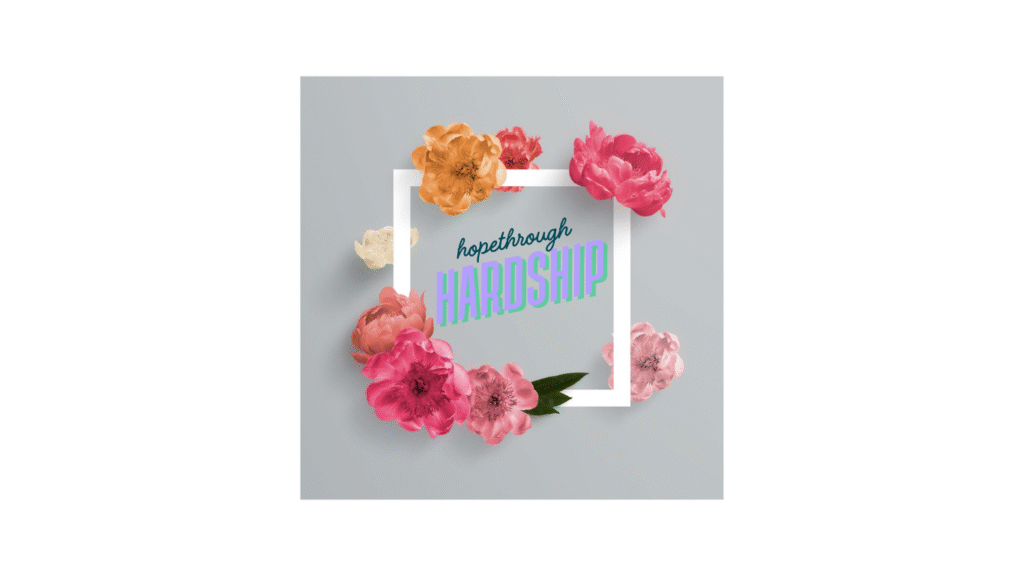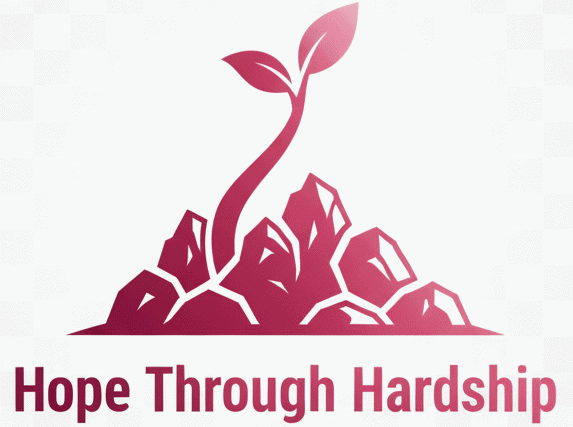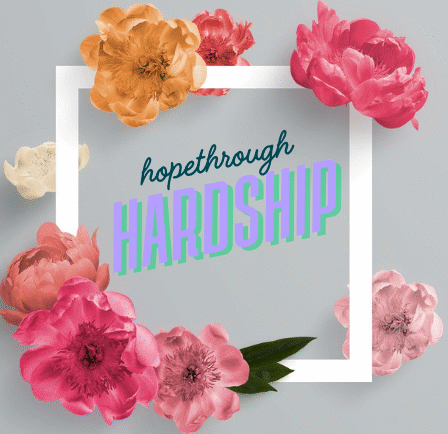
We’ve all experienced Hope those moments when life feels impossibly heavy. The moments when the future seems uncertain, when pain eclipses joy, and when simply getting through the day requires herculean effort.
Yet within these darkest chapters of our human experience lies something paradoxical—a quiet resilience that often reveals itself only when everything else has been stripped away.
The Nature of Hardship
Hardship doesn’t ask permission before entering our lives. It arrives unexpected—a health diagnosis that changes everything, the sudden loss of someone irreplaceable, financial ruin, betrayal by those we trusted, or dreams that crumble despite our best efforts. Sometimes it’s not one catastrophic event but the slow, grinding weight of persistent struggles that wear us down over time.
What makes hardship so disorienting is how it disrupts our fundamental assumptions about life. The plans we made, the security we thought we had, the trajectory we imagined—all suddenly called into question. In these moments, we find ourselves in unfamiliar territory without a map, forced to navigate by instinct and hope alone.
Finding Hope in Darkness
Hope during hardship isn’t the cheerful optimism of sunny days. It’s something more profound—a stubborn defiance against despair, a quiet knowing that even this will not be the end of your story.
Hope appears in unexpected places:
In the friend who sits with you in silence because there are no words adequate for your pain.
In the small moments of beauty that somehow still exist—the way morning light filters through leaves, the familiar smell of coffee, a child’s unexpected laughter.
In the realization that you’ve survived other difficult days, and somehow, you’re still here.
In the stories of others who have walked through fire and emerged—not unscathed, but alive and even whole in a new way.
Hope isn’t always a feeling. Sometimes it’s simply a decision to take the next breath, to put one foot in front of the other, to act as if there will be a morning worth waking up for—even when you don’t yet believe it.
The Purpose in Pain
The question “why?” haunts us during suffering. Why this challenge? Why now? Why me? These are deeply human questions that rarely receive satisfying answers in the moment.
Yet many who have traversed hardship’s terrain eventually discover something surprising: their most difficult experiences became powerful catalysts for growth, deeper connection, and unexpected purpose.
This isn’t to romanticize suffering or suggest that trauma is somehow “worth it.” Some hardships are senseless, cruel, and should never have happened. But humans possess a remarkable capacity to create meaning even from terrible circumstances.
Hardship strips away pretense and reveals what truly matters. It develops in us a deeper empathy for others who suffer. It teaches us about our own strength and resilience. It can connect us to a community of support we didn’t know existed. And sometimes, our own pain becomes the very thing that allows us to recognize and alleviate the pain of others.
The Paradox of Suffering and Hope
Hope and suffering exist not as opposites but as strange companions. Real hope isn’t the absence of pain but rather exists alongside it—acknowledging the reality of what hurts while refusing to grant it the final word.
The writer and Holocaust survivor Viktor Frankl observed that those who survived the concentration camps weren’t necessarily the physically strongest but those who maintained a sense of meaning and purpose despite unimaginable conditions. “Everything can be taken from a man but one thing,” he wrote, “the last of the human freedoms—to choose one’s attitude in any given set of circumstances.”
This is the profound paradox: our deepest suffering can reveal our greatest capacity for hope.
The Transformation of Hardship
Hardship changes us. There’s often no returning to who we were before tragedy or loss. But transformation doesn’t necessarily mean destruction—sometimes it means evolution.
The Japanese art of kintsugi repairs broken pottery with gold, creating something more beautiful and valuable than the original. The breaks aren’t hidden; they’re highlighted, honored as part of the object’s history. Our hardships similarly become part of our story—not flaws to be hidden but evidence of our capacity to endure and rebuild.
Finding Your Way Forward
If you’re currently in a season of hardship, know this: your pain is real, and you don’t need to minimize it. There’s no timeline for healing, no correct way to navigate difficulty. Sometimes survival itself is achievement enough.
But also know that countless others have stood where you stand now, feeling equally lost and overwhelmed, and somehow found their way forward. Not because they possessed special strength but because the human spirit has an extraordinary capacity for endurance and renewal.
Hope isn’t always found in grand epiphanies. More often, it appears in small moments of connection, in acts of kindness given or received, in the quiet decision to try again tomorrow. It’s found in the realization that even in your most isolated moments, you are part of a human community that has been finding ways through darkness since time immemorial.
Your hardship is your own, unique in its particulars. But in the experience of suffering and the search for hope, you are never truly alone.
Frequently Asked Questions
What does it mean to go through hardships?
Going through hardships means experiencing challenges that test our emotional, physical, mental, or spiritual limits. It means confronting circumstances that disrupt our sense of normalcy and security. Hardships vary widely—from personal losses and health crises to financial struggles, relationship breakdowns, or professional failures.
What makes something a hardship is less about the external circumstances and more about how those circumstances affect our ability to cope. What constitutes a hardship for one person might be manageable for another, depending on their resources, support systems, past experiences, and inner resilience.
Going through hardship often involves a journey through distinct emotional territories: the initial shock and disbelief, the struggle to adapt to new realities, the search for meaning, and eventually—though not linearly—finding ways to integrate the experience into our broader life story.
What gives you hope in times of hardship?
Hope in hardship comes from many sources, both internal and external:
Connection – The presence of people who care about us—who listen without judgment, who show up consistently, who remind us we’re not alone—can be profoundly hope-giving. Even one authentic relationship can anchor us during turbulent times.
Evidence of resilience – Remembering previous difficulties we’ve overcome reminds us of our capacity to endure. Each past hardship navigated becomes evidence of our ability to face the current one.
Purpose and meaning – Having something to live for beyond our immediate circumstances—whether relationships, creative work, spiritual beliefs, service to others, or personal goals—provides a horizon beyond our present pain.
Small victories – During intense hardship, hope often comes from modest achievements: getting out of bed, completing a simple task, experiencing a moment of laughter despite grief, or finding beauty amid destruction.
Stories of others – Learning how others have faced similar challenges can illuminate possible paths forward when we can’t see them ourselves. This is why human cultures have always shared stories of overcoming adversity.
Faith and spirituality – For many, belief in something greater than themselves provides a framework for understanding suffering and finding hope beyond immediate circumstances.
Why do we go through hardships in life?
This profound question has been contemplated by philosophers, spiritual leaders, and ordinary people throughout human history. While there’s no single answer that satisfies everyone, several perspectives offer insight:
Growth and development – Many hardships, though painful, catalyze personal growth in ways comfortable circumstances cannot. They may develop our compassion, resilience, wisdom, and strength.
Connection and community – Shared struggles often reveal the depth of human connection available to us. Many people discover their most meaningful relationships during or after periods of hardship.
Perspective and values – Difficult experiences have a way of clarifying what truly matters, stripping away the superficial concerns that can dominate everyday life.
The nature of existence – Some hardships simply reflect the unpredictable, sometimes random nature of life in a complex world. Not all suffering has obvious meaning or purpose.
Spiritual perspectives – Many religious and spiritual traditions offer frameworks for understanding suffering, whether as tests of faith, opportunities for spiritual development, or consequences of broader cosmic or karmic principles.
Whatever perspective resonates with you, hardship remains an inevitable part of human experience. Perhaps the question isn’t only why hardships occur but how we respond to them when they do.
What is hope amidst suffering?
Hope amidst suffering is not blind optimism that denies reality. Rather, it’s a complex, nuanced stance toward life that acknowledges pain while refusing to be defined by it. It’s the awareness that our current experience, however overwhelming, is not the totality of our existence.
True hope coexists with suffering rather than replacing it. It’s possible to feel profound pain and genuine hope simultaneously—to weep while still believing in the possibility of future joy, to acknowledge present darkness while trusting there will be light again.
Hope amidst suffering often manifests as small, concrete actions: reaching out to a friend despite depression’s isolation; creating art from grief; advocating for change after injustice; planting a garden after destruction; offering help to others even while struggling oneself.
Perhaps most importantly, hope amid suffering reflects a fundamental truth about human resilience: that we have, throughout history, found ways to endure, connect, create meaning, and even flourish despite unimaginable challenges. This doesn’t diminish the reality of suffering but speaks to the remarkable capacity of the human spirit to transcend it.
In the words of author and Holocaust survivor Elie Wiesel: “Just as despair can come to one only from other human beings, hope, too, can be given to one only by other human beings.” In our darkest moments, we become both recipients and givers of this most essential human gift—the belief that even this, whatever it may be, is not the end of the story.

